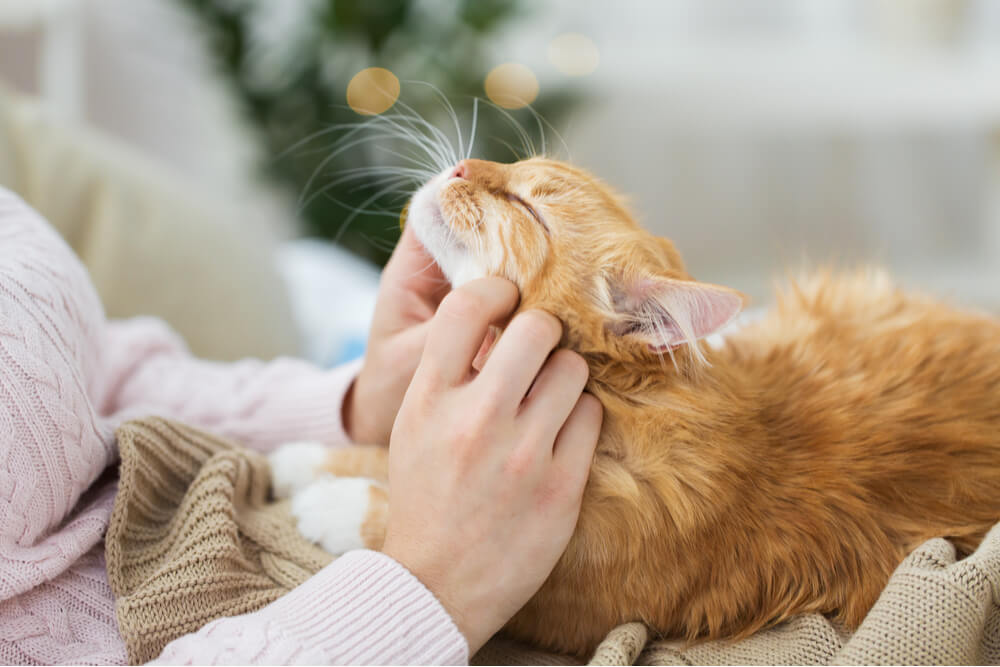Most people think cats are mysterious and complex, however once you appreciate them and gain their trust, they will be devoted to you forever. Some will even follow you endlessly around the home while others may bring you ‘gifts’ and shower you with cat cuddles.
Here are a few ways to make a cat love you.
1. Inspire Positive and Caring Human-Cat Interactions.

Cats need to feel safe and unconstrained. Allow your cat to give and receive affection on his or her own terms.
Have you noticed that people who dislike or are allergic to cats are often the ones cats are most attracted to? It’s simply because they do not seem like a threat.
Cats are solitary beings who like to be in control. Consider the “less is more” approach, allowing him or her to take charge of social interactions with you and family members.
Provide positive, consistent, and predictable human-cat social interaction at all times.
Stay calm and confident, avoid sudden movements, and avoid any aggressive behaviors.
Our feline companions can sense anxiety or frustration and may run and hide if they feel intimidated. Do not follow or retrieve them from their hiding spot. Respect their privacy.
- Avoid staring at your cat’s eyes and coming straight towards him or her. Instead, blink slowly and wait for him or her to blink back and approach you.
- When greeted, get down to a cat’s level, gently offer a relaxed finger to sniff, and allow the cat to push their head towards you. This action mimics familiar cats who engage in nose-to-nose sniffing.
- While handling, avoid leaning or reaching over your cat as much as possible, use the sideways approach and avert your gaze (evades the cat feeling threatened). Cats generally prefer low intensity and high-frequency handling. Respect their wishes and body language.
- If your cat is hesitant to come towards you, gently toss a treat nearby to help them associate your presence with a positive interaction.
2. Encourage Expression of Natural Predatory Behaviour.

Engaging in predatory play can help to establish a healthy relationship.
Inspire your cat to exercise and express their normal predatory behaviours (stalk, pounce, capture, reward) using play. Try motion sensor and interactive toys, Nina Ottosson Treat Puzzle Games, snuffle mats, Da Purr Peller, imaginative vertical towers, and cardboard castles.
Stimulate foraging by concealing food in different spots. It is more natural for cats to scavenge and eat small meals from multiple locations, aiding mental and physical stimulation.
Naturally, cats have tendencies to explore, forage, climb, hunt, and patrol territories. Fenced cat-friendly gardens, harness and leash walks, and portable enclosures are all environments suitable for such behaviors.
Most cats tend to avoid boundless spaces, which can leave them feeling visible and vulnerable. However, confident, adventuresome cats may enjoy outdoor hiking journeys.
3. Teach a New Trick.

Your individual cat can be trained to perform many tricks which can help reduce fear, anxiety, and frustration. Training also reinforces the human-animal bond. Unlike dogs, cats will not take kindly to coercion or petting as a reward. Some cats are food-driven or toy-motivated and can be clicker or target trained.
Once you figure out their most desirable treat or incentive, start with short sessions lasting a few minutes each day. Recent research suggests that teaching cats simple tasks such as giving a paw, sitting, or high-five may be an effective way to reduce frustration in rescue homes and indoor cats.
4. Guard Against Anthropomorphism

When you’re working in deepening your bond with your cat, it’s important to keep their needs in mind and not anthropomorphize.
Learn as much as you can about felines and what motivates their behaviour.
‘Mother’ but don’t smother your cat with emotions and approachability, avoid picking them up unless necessary.
Provide your cat the flexibility to maintain a sense of control during social contact. Option to initiate an interaction and leave when desired.
Moggies like hiding and sleeping uninterrupted, respect their need for space and serenity – don’t take it personally since they prefer to be alone.
5. Enhance Your Cat’s Environment!

Enriching your cat’s environment can help them to feel more bonded to you. In addition to indoor enrichment, this can involve taking your cat outside on a leash or letting them out in a safe enclosure. Melina Grin / Cats.com
Enhancing your pet’s environment means providing them not only a secure home that meets their specific needs but also a ‘natural’ environment that pleases their individual and instinctive needs.
Cats love three-dimensional living. Height isn’t only pleasing, a form of exercise, but necessary as a security platform and concealment from predators.





0 Comments